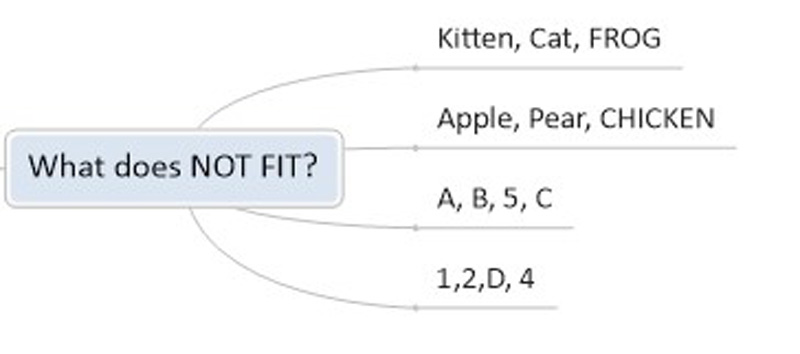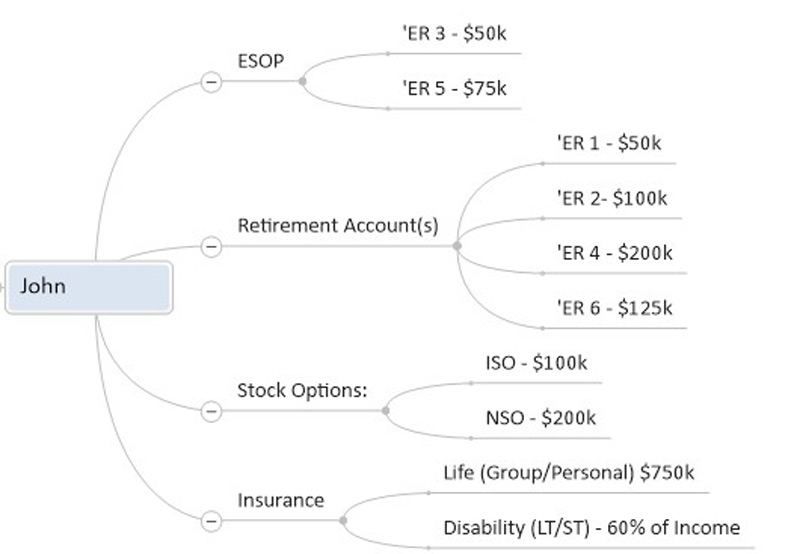What is WRONG with Your Financial Planning 'Picture'?
For a revealing reality check, take your finances and turn them into a one-page visual representation. This exercise could bring you some much-needed clarity as you near retirement.

Remember back to your elementary school days when your teacher passed out the “What’s Wrong with the Picture” test. Your job was to scan the page to, find those items that were either missing from or not supposed to be in the picture.
It looked something like this:

You got a time limit and the number of items you needed to identify to complete the activity. You focused on your paper, doing your best to spot the items, and ultimately tried to be the first person to place your pencil down, a sure sign to the rest of the class that you “did it” and you were “first.”
From just $107.88 $24.99 for Kiplinger Personal Finance
Become a smarter, better informed investor. Subscribe from just $107.88 $24.99, plus get up to 4 Special Issues

Sign up for Kiplinger’s Free Newsletters
Profit and prosper with the best of expert advice on investing, taxes, retirement, personal finance and more - straight to your e-mail.
Profit and prosper with the best of expert advice - straight to your e-mail.
How does this little grade school exercise relate to financial planning? Well, if you took all the pieces of your financial life and put them down on a single piece of paper, after carefully scanning the page for items that don’t “fit,” you might be surprised at what jumps out at you.
Changing Workplace Creates Retirement Complications
Complicated finances are a fact of life these days. Today, according to the Bureau of Labor Statistics, workers hold 10 different jobs before age 40, and that number is projected to grow. Employers have changed their financial structures to remain competitive in our global economy — by doing away with pensions, company paid health insurance, and gold watches after 30+ years of service. In addition, science, technology and innovations have disrupted many jobs and industries, changing the labor outlook and giving many U.S. workers a scarcity mindset of “… Will I have a job and if so, what job will I have?”
Today, everything is a rush, hurry up to get here, hurry up to get there, and it’s time for bed to do all over again.
How the Picture Test Works: One Couple’s story.
To illustrate how our “What’s Wrong with the Picture” test could help you with your own retirement planning, let’s take a look at a fictional couple — Bill & Donna — and their son, Johnny:
- Bill has worked at six different jobs in technology, and at each job he elected 10% of his income to be invested for his future. Each employer offered a unique benefit package for employee retention, from company-sponsored retirement plans to Employee Stock Ownership Plans (ESOP), stock options such as Non-Qualified (NSO) and Incentive Stock Options (ISO) , and non-qualified bonus plans. When transitioning from one employer to the next, some companies went through mergers, name changes and acquisitions. Some of the benefit plan departments offered continuity with insurance plans via life and disability.
- Meanwhile, Donna has worked at five different jobs in the medical field at various hospitals. After their child was born, Donna stayed home until little Johnny was in pre-school. Then, Donna returned to the workforce. During Donna’s working years she opted to put 7% of her gross income into plans similar to Bill’s and left things where they were.
Today, Bill and Donna are five years from retirement, and they decided that it would be wise to review their financial affairs. My business partner and I took their financial data and analyzed it to create the following financial “picture” to discuss with Bill and Donna.
Bill’s picture: [‘ER = Employer, ISO = Incentive Stock Options, and NSO = Non-Qualified Stock Options]

We Take the Financial Picture and Turn it into Talking Points
Upon looking at Bill’s financial picture, we can use it as a guide to engage Bill and Donna in a conversation. The goal is to best understand each asset, account and their details before we make any recommendations. Our customized picture helps keep the couple engaged and NOT overwhelmed.
Perhaps we can ask a few questions with regards to Bill’s retirement accounts and stock options, such as:
- Can you tell me why you have four separate qualified retirement accounts? What investment options are in your retirement accounts — how are you allocated — what are you paying in fees and how has your performance been in each account relative to their respective benchmarks?
- Have you updated the primary and contingent beneficiaries on all qualified retirement accounts? If so, who are they? How recent are your beneficiary choices on file?
- What is your income tax plan for the stock options? How concentrated is your wealth in the company stock? Do you have full understanding of the rules in your stock plan if you leave your employer?
- Are we missing anything? Does this give you a good picture of where you are? Do you have any questions for us?
The feedback that we have received upon going through this type of process during our meeting has been so rewarding. In essence, the picture can act as a quasi-balance sheet and if we add the income and expenses to the picture we have a quasi-income statement.
Consider, how your life would be if you could shrink down the complexity of accounts, paperwork, statements to ONE PAGE — how easy would it be for you to determine “WHAT IS MISSING from this picture? or What does NOT FIT?”
Profit and prosper with the best of Kiplinger's advice on investing, taxes, retirement, personal finance and much more. Delivered daily. Enter your email in the box and click Sign Me Up.

Dennis D. Coughlin, CFP, AIF, co-founded CG Capital with Christopher C. Giambrone in 1999. He has been in practice since 1996 and works with individuals nearing retirement and those whom have already retired. Proud of his humble upbringing, Dennis shares his advice with the same core principles that he was raised with. When not in the office, you will find him with his family enjoying the outdoors.
-
 Gold and Silver Shine as Stocks Chop: Stock Market Today
Gold and Silver Shine as Stocks Chop: Stock Market TodayStocks struggled in Friday's low-volume session, but the losses weren't enough to put the Santa Claus Rally at risk.
-
 Don't Wait Until January: Your Year-End Health Checklist to Kickstart 2026
Don't Wait Until January: Your Year-End Health Checklist to Kickstart 2026Skip the fleeting resolutions and start the new year with a proactive plan to optimize your longevity, cognitive health, and social vitality.
-
 Premium Rewards Cards: More Perks, Higher Fees
Premium Rewards Cards: More Perks, Higher FeesSome issuers are hiking the annual fee on their flagship luxury credit cards by hundreds of dollars. Are they still worth using?
-
 How to Master the Retirement Income Trinity: Cash Flow, Longevity Risk and Tax Efficiency
How to Master the Retirement Income Trinity: Cash Flow, Longevity Risk and Tax EfficiencyRetirement income planning is essential for your peace of mind — it can help you maintain your lifestyle and ease your worries that you'll run out of money.
-
 I'm an Insurance Expert: Sure, There's Always Tomorrow to Report Your Claim, But Procrastination Could Cost You
I'm an Insurance Expert: Sure, There's Always Tomorrow to Report Your Claim, But Procrastination Could Cost YouThe longer you wait to file an insurance claim, the bigger the problem could get — and the more leverage you're giving your insurer to deny it.
-
 Could a Cash Balance Plan Be Your Key to a Wealthy Retirement?
Could a Cash Balance Plan Be Your Key to a Wealthy Retirement?Cash balance plans have plenty of benefits for small-business owners. For starters, they can supercharge retirement savings and slash taxes. Should you opt in?
-
 7 Retirement Planning Trends in 2025: What They Mean for Your Wealth in 2026
7 Retirement Planning Trends in 2025: What They Mean for Your Wealth in 2026From government shutdowns to market swings, the past 12 months have been nothing if not eventful. The key trends can help you improve your own financial plan.
-
 What Defines Wealth: Soul or Silver? Good King Wenceslas' Enduring Legacy in the Snow
What Defines Wealth: Soul or Silver? Good King Wenceslas' Enduring Legacy in the SnowThe tale of Good King Wenceslas shows that true wealth is built through generosity, relationships and the courage to act kindly no matter what.
-
 An Investing Pro's 5 Moves to Help Ensure 2025's Banner Year in the Markets Continues to Work Hard for You in 2026
An Investing Pro's 5 Moves to Help Ensure 2025's Banner Year in the Markets Continues to Work Hard for You in 2026After a strong 2025 in the stock market, be strategic by rebalancing, re-investing with a clear purpose and keeping a disciplined focus on your long-term goals.
-
 Introducing Your CD's Edgier Cousin: The Market-Linked CD
Introducing Your CD's Edgier Cousin: The Market-Linked CDTraditional CDs are a safe option for savers, but they don't always beat inflation. Should you try their counterparts, market-linked CDs, for better returns?
-
 How to Protect Yourself and Others From a Troubled Adult Child: A Lesson from Real Life
How to Protect Yourself and Others From a Troubled Adult Child: A Lesson from Real LifeThis case of a violent adult son whose parents are in denial is an example of the extreme risks some parents face if they neglect essential safety precautions.